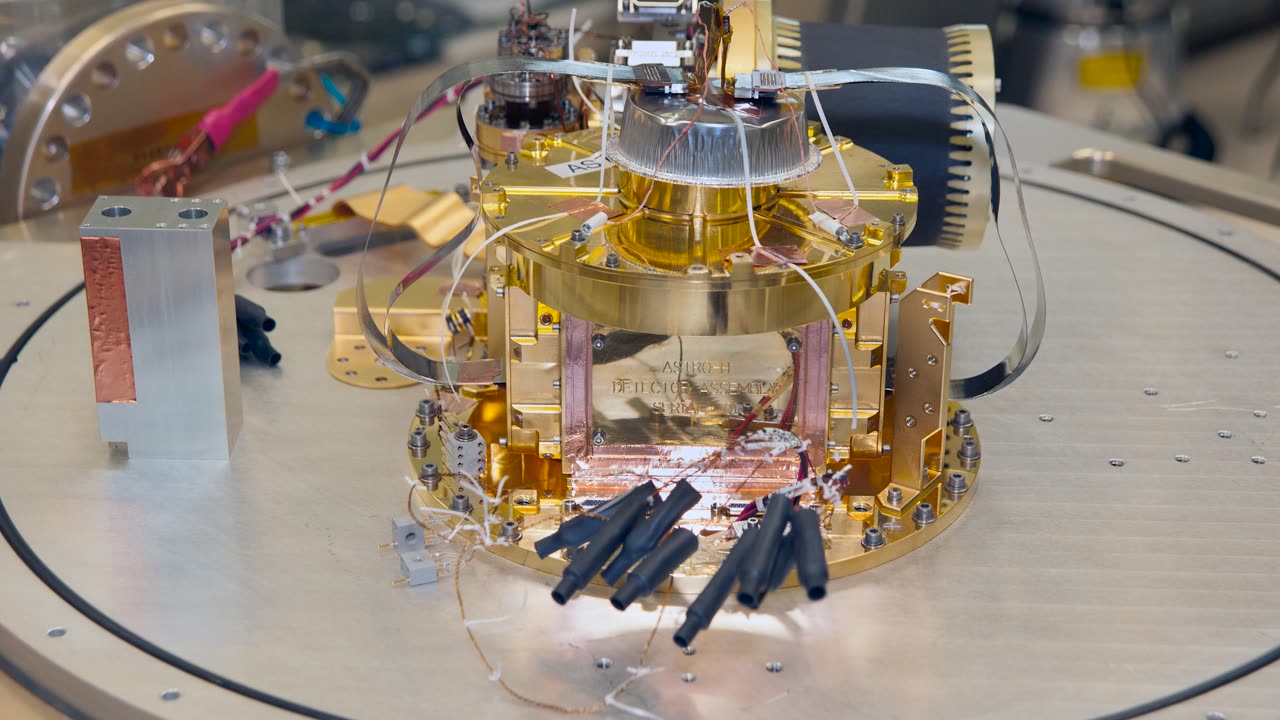Premium Only Content

Exploring the Hidden X-ray Cosmos
Watch this video to learn more about XRISM (X-ray Imaging and Spectroscopy Mission), a collaboration between JAXA (Japan Aerospace Exploration Agency) and NASA.
Credit: NASA's Goddard Space Flight Centre
Music Credits: Universal Production Music
Lights On by Hugh Robert Edwin Wilkinson
Dreams by Jez Fox and Rohan Jones
Changing Tide by Rob Manning
Wandering Imagination by Joel Goodman
In Unison by Samuel Sim
A powerful satellite called XRISM (X-ray Imaging and Spectroscopy Mission) is set to provide astronomers with a revolutionary look at the X-ray sky.
XRISM is led by JAXA (Japan Aerospace Exploration Agency) in collaboration with NASA and with contributions from ESA (European Space Agency).
XRISM detects X-rays with energies ranging from 400 to 12,000 electron volts. (For comparison, the energy of visible light is 2 to 3 electron volts.)
This range will provide astrophysicists with new information about some of the universe’s hottest regions, largest structures, and objects with the strongest gravity.
The mission has two instruments, Resolve and Xtend.
Resolve is a microcalorimeter spectrometer developed in collaboration between JAXA and NASA. When an X-ray hits Resolve’s 6-by-6-pixel detector, its energy causes a tiny increase in temperature. By measuring each individual X-ray’s energy, the instrument provides information about the source, such as its composition, motion, and physical state.
To detect these tiny temperature changes, Resolve must operate at just a fraction of a degree above absolute zero. It reaches this state in orbit after a multistage mechanical cooling process inside a refrigerator-sized container of liquid helium.
XRISM’s second instrument, Xtend, was developed by JAXA. It will give XRISM one of the largest fields of view of any X-ray imaging satellite flown to date, observing an area about 60% larger than the average apparent size of the full moon. The images it collects will complement the data collected by Resolve.
Each instrument is at the focus of an XMA (X-ray Mirror Assembly) designed and developed at Goddard.
X-ray wavelengths are so short, they can pass straight between the atoms of the dish-shaped mirrors used to capture visible, infrared, and ultraviolet light.
Instead, X-ray astronomers use nested curved mirrors turned on their sides. The X-rays skip off the surfaces like stones across a pond and into the detectors.
Each of XRISM’s XMAs houses hundreds of concentric, precisely shaped aluminum shells built in quadrants and assembled into a circle. In all, there are over 3,200 individual mirror segments in the two mirror assemblies.
After launch, XRISM will begin a months-long calibration phase, during which Resolve will reach its operating temperature.
-
 LIVE
LIVE
Barry Cunningham
2 hours agoJOIN US FOR MOVIE NIGHT! TONIGHT WE FEATURE THE MOVIE RFK LEGACY!
3,352 watching -
 LIVE
LIVE
Sarah Westall
2 hours agoHow Bitcoin was Hijacked, Palantir is a Deep State Upgrade & more w/ Aaron Day
170 watching -
 8:29
8:29
Colion Noir
11 hours agoThree Masked Idiots Show Up at Her Door — Here’s What Happened Next
10.8K14 -
 15:38
15:38
Cash Jordan
6 hours agoPortland Zombies EMPTY 52 Stores… Mayor FREAKS as “Sanctuary” SELF DESTRUCTS
33.3K47 -
 LIVE
LIVE
Precision Rifle Network
1 day agoS5E4 Guns & Grub - Dustin Coleman of ColeTac
70 watching -
 1:09:25
1:09:25
Donald Trump Jr.
6 hours agoCorrupt UN Carbon Tax Exposed, Interview with John Konrad | TRIGGERED Ep.285
137K71 -
 42:58
42:58
TheCrucible
4 hours agoThe Extravaganza! EP: 59 with Guest Co-Host: Rob Noerr (10/23/25)
66K6 -
 1:40:59
1:40:59
Kim Iversen
5 hours agoTrump Threatens To End ALL Support For Israel
59.7K134 -
 13:09:10
13:09:10
LFA TV
22 hours agoLIVE & BREAKING NEWS! | THURSDAY 10/23/25
161K23 -
 LIVE
LIVE
Side Scrollers Podcast
9 hours ago🔴FIRST EVER RUMBLE SUB-A-THON🔴DAY 4🔴BLABS VS STREET FIGHTER!
919 watching